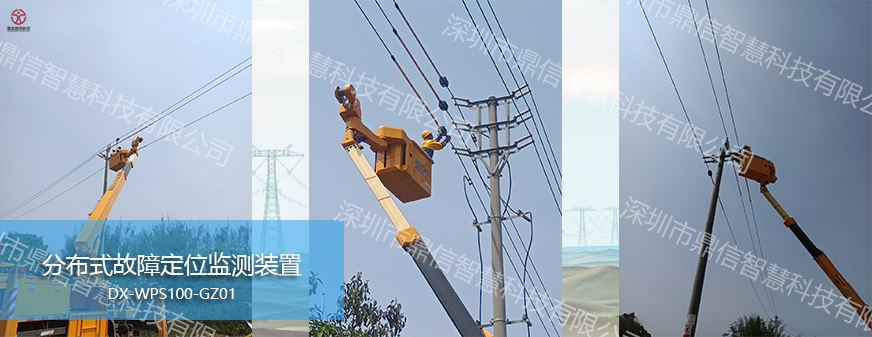I. Project completion information
Installation: Distributed fault location device for transmission lines Installation case
Project time: 2024.10.09
Project completion unit: Shenzhen Dinsee Smart Technology Co.Ltd
II. Introduction to distributed fault location devices
With the increase in the demand for electricity in society, there are more and more ultra-high voltage and long-distance transmission lines, and it is especially important to reduce the outage time and ensure the reliability of power supply. When a line failure occurs, accurate and fast localization of the fault point, rapid fault handling and restoration of power supply become critical.
Distributed fault location deviceproposes a new distributed fault ranging method on the propagation characteristics of transmission lines, and proposes a brand new distributed fault ranging method on the identification of folded reflection signals, determination of singularities of traveling wave signals, identification and localization of lightning interference, GPS/BeiDou interference, and the identification and positioning of GPS/Beidou interference in the distributed fault ranging method. In the distributed fault ranging method, the key issues such as identification of refraction signal, determination of traveling wave signal singularity, identification and positioning of lightning interference, GPS/BeiDou positioning and timing, induction power collection, wireless communication in strong electromagnetic field, etc., have been thoroughly researched, and a new generation of distributed lightning positioning devices and systems have been developed.
It realizes high-frequency sampling and fast recording of signals such as fault travelling wave and refraction travelling wave, and through the background software system of the main station, it can quickly and accurately analyze the type of faults (lightning strike, discharge to tree, single-phase and inter-phase faults), and locate the position of the fault point (accuracy ≤ 300 meters).
The system also supports web access, SMS alerts and other methods, so that operation and maintenance personnel can obtain the time, type and location of the fault occurred in a timely manner, and other relevant information, greatly reducing the intensity and cost of fault inspection work, shorten the fault investigation time, and effectively improve the reliability of the power supply at the same time, but also greatly reduces the fault outage due to the direct and indirect economic losses brought about by the accident.





